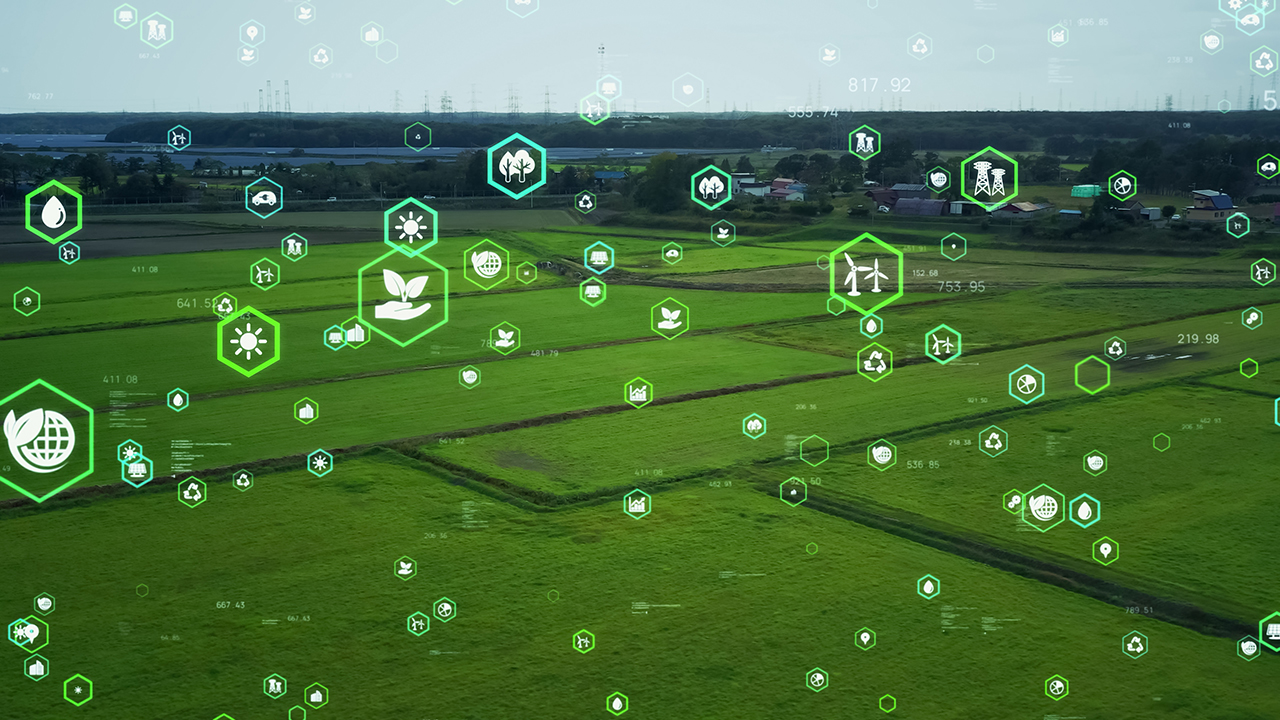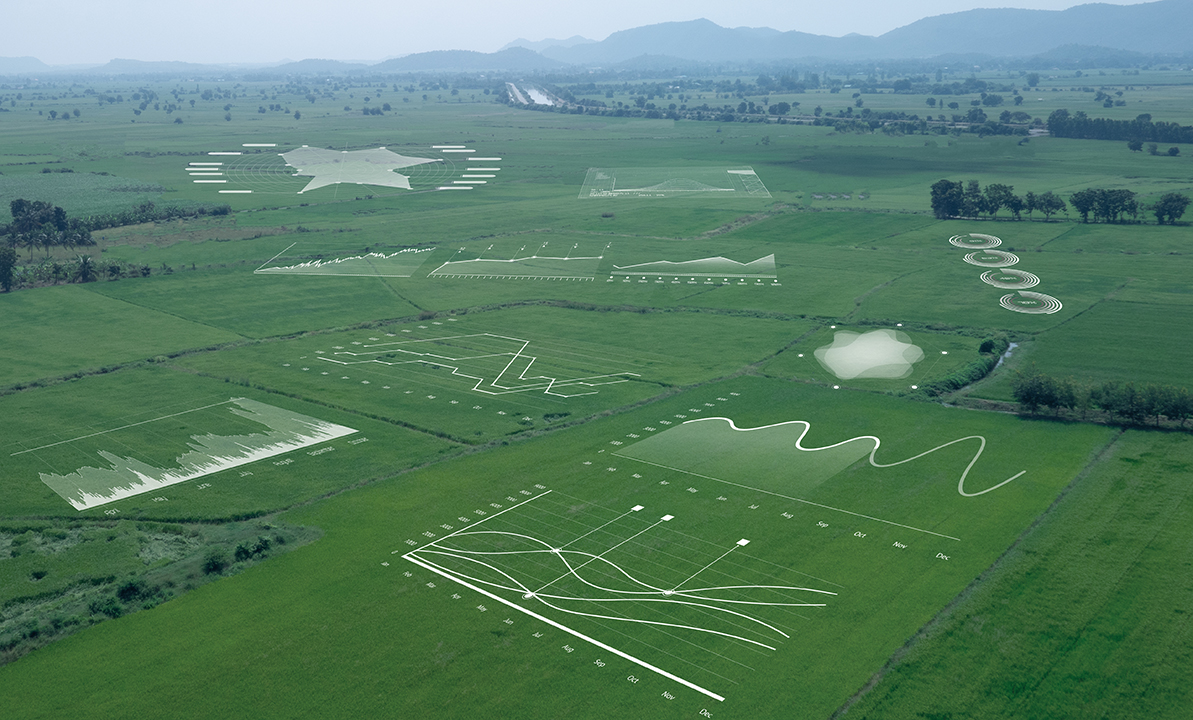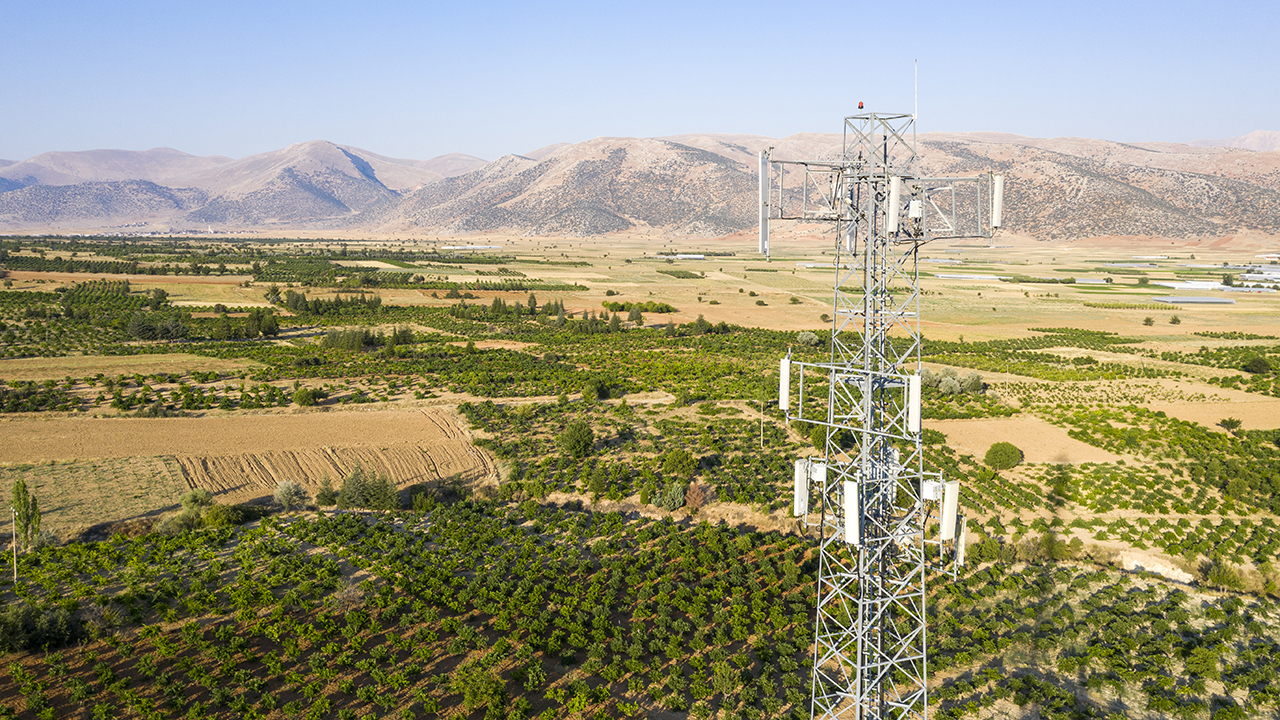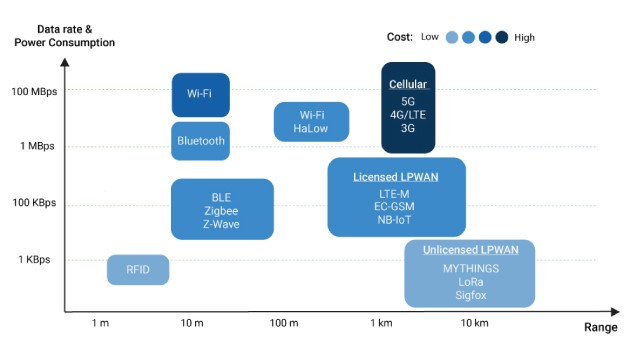Selecting a wireless module solution should be easy. In a perfect world you would simply pick the one with the longest range. That way, no matter how far apart your devices are deployed, they’d always be able to communicate. Alas, it’s not that simple. Fortunately, there are solutions that match any use case, from long range radio communication, to short range or in between.
Ask any Internet of Things expert which radio module is the best and the answer will be, “it depends.” That’s because each wireless device type has its own strengths and weaknesses. What’s great for one project may be terrible for another. For example, a module that uses very little battery power may also offer have low bandwidth. That’s a perfect solution for a wireless bathroom scale, but all wrong for streaming live video from a conference room, and vice versa.
With radio range, the same thing holds true. You need to evaluate the use case and have some understanding of how radio signals propagate depending upon both equipment and environment. In this article we look at all the considerations to determine the best choice in module range and type for
your project.
Factors that Affect Wireless Signal Range

Range is defined as the maximum distance where communication can exist between two antennas in a wireless network. But range is not only about distance. Here are some important considerations:
- Obstacles, terrain, and radio physics all affect range.
- Another factor is antenna design, with considerations like frequency bands and impedence.
- Noise is another important factor. Just like it’s hard to hear someone at a crowded party, it’s tough to pick out a radio signal in environments with lots of radio noise.
The various considerations and factors that can impact how well the devices in your network communicate include 10 different factors.
1. Throughput
In IoT, you often need to communicate small amounts of data from remote locations. Data throughput has a significant impact on range. When data rate increases, the range for effective communication between devices can shrink. This is because fast data rates require a higher signal-to-noise ratio for successful demodulation.
If someone in a noisy room is speaking very rapidly they are hard to understand. If they slow down, they are easier to understand. Radios work similarly. Many IoT devices send as little as a single sensor value once per day. When that data is sent at a low bitrate, it can be detected much farther away.
2. Power
Radio signals require a lot of power because, unlike messages running through a wire, they decay in an accelerated fashion. As radio signals radiate away from their source, they rapidly spread out like ripples in a pool. Both sound and radio decay according to the
inverse square law. Each time you double the distance, you require four times the amount of power, so traversing long distances uses vastly more energy compared to shorter ones.

3. Noise
In an RF network, the
signal is the information transmitted between devices.
Noise is anything else. Signal-to-noise (S/N) ratio is a metric that compares signal power levels to noise power levels. It's an important factor in determining the radio system's
range, because range is about reliably distinguishing signal from noise, not the distance that a given radio signal can travel (which is infinite). Radio noise is part of the natural environment, which includes:
- Cosmic background radiation and solar interference
- Atmospheric sources like lightning
- Human sources like power lines, motors, fluorescent lighting, switches, computers and unrelated radio communications
4. Frequency
Lower frequency radio signals can easily diffract around objects and be bounced back by the atmosphere, increasing effective range. However, lower frequencies have limited bandwidth so throughput is constrained. Higher frequencies offer much higher throughput, but have difficulty diffracting around obstacles and will not be reflected back by the atmosphere, limiting their range.
5. Free space loss
As a radio signal travels through space, even in a vacuum, its signal will be diminished as it spreads out its energy over an ever wider area. This spreading follows the inverse square law, which describes the exponential loss of power over distance. We address free space loss at a given frequency by reducing the distance between transmitter and receiver.
6. Diffraction
When a radio signal meets an object in its path, it will scatter or diffract, with some of the energy bending around the object, but the remainder being directed away from the receiver and therefore lost. Sharp edges diffract better than rounded objects, which tend to absorb more of the signal. Diffraction is just one of many reasons for avoiding objects in the signal path.
7. Multipath
In ideal environments like outer space, signals sent by a transmitter always arrive directly, without reflecting off any surfaces or objects. Here on Earth, things are unavoidably more complicated. In cases where the line of sight is clear, some signals will arrive directly, but others will bounce off nearby objects and terrain, thereby distorting them. Radio protocols and systems are typically designed to address some multipath interference. Placing antennas high up and clear of obstructions also helps.
8. Absorption
Radio signals can travel an infinite distance across empty space; however, when they encounter objects, some of their energy is absorbed. Radio signals can travel through walls, but are attenuated in the process. Humidity in the air can absorb enough radio energy to disrupt high-frequency signals. Tree leaves and other vegetation in the signal path can dissipate enough of the signal to cause problems at lower frequencies.
9. Terrain
Hills or mountains can absorb, diffract, reflect or entirely block signals from reaching their destination. The makeup of the ground itself can have an effect at low frequencies, with signals traveling better over lakes, oceans or swamps than dry areas like deserts. The Fresnel Zone, a roughly football-shaped area between the antennas, should be as clear of terrain and obstacles as possible to optimize communications performance.
10. Antennas and Range
Antennas transform electrical signals into radio waves to transmit information "over the air." For receivers, radio waves are transformed back into electrical variations that computers can understand. Using the right antennas correctly is critical. Poor choices can limit range, waste battery power and turn an otherwise well-conceived system into a support nightmare. See our guide,
Top 10 Antenna Design Considerations for more information.
Power and Battery Life Considerations for Communication Range

As we’ve seen, range and power are intertwined in wireless communications. Many applications today deploy thousands of wireless devices across a vast area, and it's important to account for the time and expense of managing batteries. Here’s a brief primer on the factors.
Power Management Budgets
Careful device power management can extend battery life from days to years. A great way to conserve power is by matching the range of the radio to the application requirements. Choosing shorter-range protocols or manually limiting transmission power to effectively reduce range will increase battery life.
Some protocols can limit transmission power automatically with an adaptive data rate function that dynamically limits the device to the lowest
reliable transmission power. This is especially helpful when devices are mobile, or when the radio environment changes over time (seasonal foliage changes, daily changes in the radio noise environment, etc.)
Sleep Modes
To conserve energy and extend battery life, IoT devices often use sleep modes when they are not needed. A sleeping radio module generally won’t receive any transmissions. However, many IoT use cases require devices in the field to transmit and receive.
You can use a store-and-forward method, if the network or protocol design supports it. In certain protocols this is enabled by "parent" radio nodes that temporarily store transmissions intended for a sleeping "child" device until that child wakes up and requests them. In other protocols, a central network server acts as the parent, forwarding messages only when it detects a remote device wakeup. With proper power management, battery and solar-powered systems can run for multiple years without maintenance.
Digi's Offerings by Range

Digi XBee® radio modules are available in a variety of ranges, to match the diversity of IoT applications and environments. A common physical form factor, shared interface and decades of reliability make the Digi XBee platform the leader in wireless networking, whether your project needs to communicate across a room or across the globe. And the Digi LoRaWAN® solution has expanded the Digi offering.
Let’s take a quick look at each module type below. For more detailed information on the XBee ecosystem, see our
XBee Buying Guide. For more on Digi LoRaWAN, see our article on the
Digi LoRaWAN Device-to-Cloud Solution.
Short Range

Short range radios keep power, size, heat and cost to a minimum. They are the perfect solution for residential energy monitoring, commercial building automation, or high-density greenhouse sensing. When using
mesh networking, messages can hop between modules on their way to their destination, creating networks much larger than the range of any individual radio device. With so many advantages, it should be the first category you consider when evaluating solutions for your IoT application.
A single, tiny module that supports three different wireless networking protocols, plus BLE and onboard programmability. With a line-of-sight range of 4,000 feet, it makes a terrific solution for home automation, industrial control and environmental sensing. The short-range comms and medium bandwidth support long battery life. Mesh options enable networks larger than the range of individual nodes covering large homes or small outdoor farms.
These Wi-Fi embedded modules bring one of the most popular wireless networking technologies to the Digi XBee platform. With standard Wi-Fi range (300 feet) and great throughput, they interoperate with any nearby base station. This partially offsets the added costs of Wi-Fi’s more power-hungry protocol, plus its additional provisioning complexity. Great for adding a device to a pre-existing network; just be sure your provisioning plan includes plenty of resources for managing multiple authentication setups that will change over time.
Every Digi XBee 3 module integrates BLE in addition to whatever main protocol
is selected. BLE is common on smartphones so it’s an easy way to configure modules, log data from battery-powered wireless sensors or create location beacons. BLE is typically quite short range (300 feet or less), but uses very little power, so it’s a great secondary protocol for IoT solutions.
Medium Range

Mid-range radios use more power, create more heat and typically cost more. They are best employed for greater distances or when mesh networks need to cover a larger area. Many of these protocols use sub-Gigahertz frequencies that are license free, but differ by region, so you’ll need to pay more attention to compliance. Solar fields, municipal lighting control and remote equipment monitoring are all great IoT use cases for medium-range modules.
The higher-power version of Digi’s smallest module for wireless networking, includes BLE and onboard programmability. With line-of-site range of 2 miles, it’s ideal for building automation, factory-wide controls, smart city solutions and large-area agricultural sensing. Its medium range transmissions use more battery than the regular-power version, but you can mitigate this by implementing any of several sleep options. Networks can include a mix of high and low-power modules to optimize battery life and costs.
The 900HP module offers great range (up to 28 miles with a high-gain antenna) as well as mesh options to network many cooperating nodes spread over a large area. Its 900 MHz frequency limits its use to North America plus a handful of other countries, and its best range is at a very low throughput, but as long as its characteristics match your application’s need it provides a terrific solution.
These modules feature interoperability with Digi’s legacy 9XStream radios. They have great range (up to 28 miles lin-of-sight) at low bandwidth, while maintaining the standard XBee through-hole footprint. For new designs the Digi XBee-PRO 900HP, which is a newer model with more throughput flexibility is recommended.
Long Range

When you need to cover large distances, you need a long range protocols. For IoT we usually still need to run on batteries, so it’s common to offer reduced throughput that conserves power while maintaining a long communications range. Smart city projects, industrial campus monitoring, remote mining or drilling, and wide area agricultural systems are typical applications for this type of radio. This is especially true when the data to send is quite small but it needs to go a long distance.
The XTend is available in both XBee surface-mount format and the older 9XTend footprint. Both are designed for interoperability with Digi’s legacy 9XTend radios. Their long range (40 miles line-of-sight) is paired with fairly significant power requirements, a good match for mining and drilling operations, monitoring heavy machinery or remote weather stations that implement sleep to maintain solar-recharged batteries.
These are the "muscle modules" of the Digi XBee ecosystem, providing excellent reliability and redundancy for building low-power, mission-critical wireless systems. With optional mesh networking, they can create networks covering extremely large areas (up to 65 miles line-of-sight). Power needs are greater and throughput is limited at longer distances. But with extended range, strong interference blocking, and the ability to communicate below the noise floor, the Digi XBee-PRO SX is an outstanding IoT solution.
The most recent addition to the Digi line is a combined
LoRaWAN module and gateway kit.
The Digi LoRaWAN solution offers specialized products for the sensor and gateway ends of the wireless communication. LoRa wireless modulation is a non-line of sight technology able to penetrate obstacles such as buildings, vegetation and/or high RF interference areas such as industrial machinery.
LoRaWAN is a global standard that primarily operates at 900 MHz, 868 MHz and 400 MHz — depending on the country regulations — that uses a specific configuration of the LoRa modulation scheme. LoRaWAN sensors are very low power with line-of-sight range up to 100 kilometers with 2-way communications. Typical non-line-of-sight applications are up to 20km. Gateways are high-performance powered systems that connect multiple devices and are managed through a cloud platform such as Digi X-ON to provide massive scalability.
LoRaWAN is optimized for small payloads and up to thousands of devices per gateway, and is configurable for low-power battery operation or low-latency powered operation. LoRaWAN solutions are ideal for distributed outdoor infrastructure such as utilities, agriculture and industrial systems. The Digi X-ON cloud not only manages the LoRaWAN radio system, but provides automated provisioning and deployment functions for devices and gateways.
Cellular – Mixed and Extended Range

It is always tricky to compare the range of cellular with other protocols, because while the range of any individual cell module is decidedly modest, worldwide mobile network coverage means a device placed almost anywhere can communicate with other devices all across the globe.
New protocols are easier on battery life, and have improved ways to save power with sleep modes. Mobile data plans are required, but these have come down greatly in cost to match the low-bandwidth needs of IoT.
Cellular is perfect for mobile applications or for fixed locations where it’s not practical to build your own wireless network infrastructure. Whether you are tracking shipping containers, monitoring vending machines or counting currency in an ATM, cellular modules offer global coverage on a slim budget.
This end-device certified LTE Category 1 module offers line-of-sight range of 5-7 miles, onboard programmability, BLE and the familiar Digi XBee interfaces that speed your project to market. Category 1 throughput isn’t enough for media like video, but it’s great for IoT projects where decent amounts of data need to be transferred. Data plans for Cat 1 are low-cost, and technologies like SMS are included, providing lots of development flexibility. The modules are optionally available with pre-activated SIMs, to help get devices out the door with the lowest friction possible.
Like its Cat 1 sibling, this LTE-M/NB-IoT module is end-device certified, offers a 5-7 mile range, onboard programmability, BLE and familiar interfaces. Both LTE-M and NB-IoT protocols were designed to support low-bandwidth IoT applications needing low power consumption at low cost. Data plans for both protocols are inexpensive and new cellular sleep options can help device batteries last for months or longer. Pre-installed SIMs are optionally available so that IoT devices can go from the factory straight into the hands of the user, making deployment a breeze. This is one of the most forward-looking modules in Digi’s lineup of IoT solutions.
Combined Solutions: Short Range + Long Range
Sometimes the best solution is to marry several different connectivity types together. For example, in a remote environmental sensing application, it might work best to use a Zigbee or DigiMesh short-range network to densely cover a relatively small area like an oil rig, then backhaul the data to a distantly-located control center via long-range radio, like the Digi XBee-PRO SX. In less remote locations where cellular is available, that might be a great backhaul choice too. The same network could also implement very-short range BLE to allow direct sensor configuration from a local smartphone. Combining several protocols so that each can do what it does best often creates the ideal IoT solution.
This chart provides an overview of protocols, data rates and power consumption.
 Source: Behr Tech
Source: Behr Tech
Summary
We’ve covered wireless communication range and the many factors that affect it, demonstrating why the answer to the question of how far a radio signal will go is, “it depends.” Environment, building materials, terrain, reflections, weather, antennas, transmission power, protocols, frequencies and especially signal-to-noise ratio all come into play. So how do we figure out the best solution?
First, you must consider all the variables, including:
- Is the intended use case indoor or outdoor?
- Is the application mobile or fixed?
- What distance do you need to cover?
- What is the size and frequency of data will you be transmitting?
- Will there be a lot of radio noise?
- Will power come from coin cell batteries or can the devices be plugged into mains power?
- How many devices or nodes will be connected together?
- What type of building construction, or outdoor topography do you anticipate?
- In which regions of the world will devices be deployed?
- How much can the system cost and still provide the needed return on investment?
Digi is here to help you go the distance, no matter what radio range you need. For more information, we recommend reviewing this
overview of IoT device roles and our
guide to selecting an architecture.
Need hands-on design support? Digi’s
wireless design experts can create customized designs to solve even the trickiest communications problems.
The Digi team can help you assess each of these factors and select the perfect solution to fit your project requirements and cover the ranges needed.
Contact us for help with your decision making.